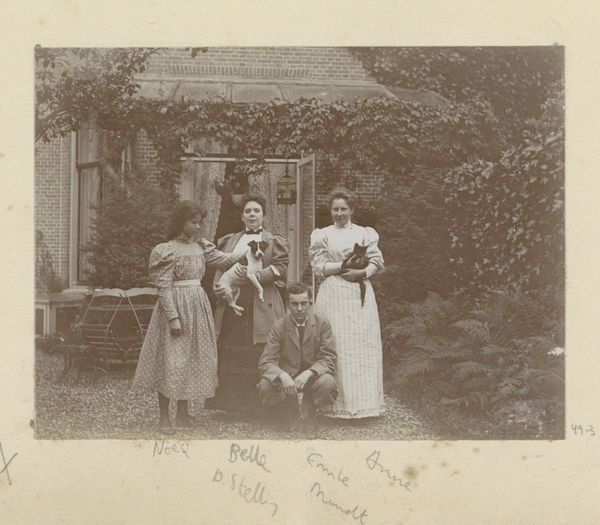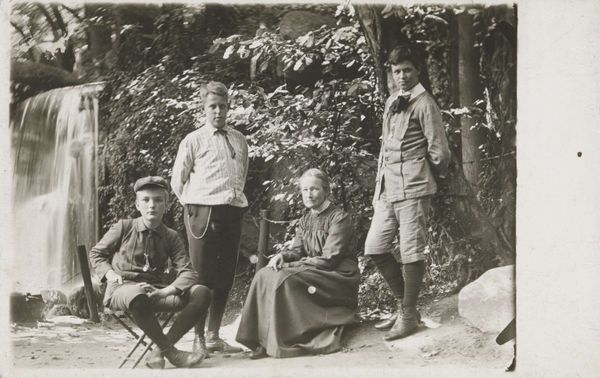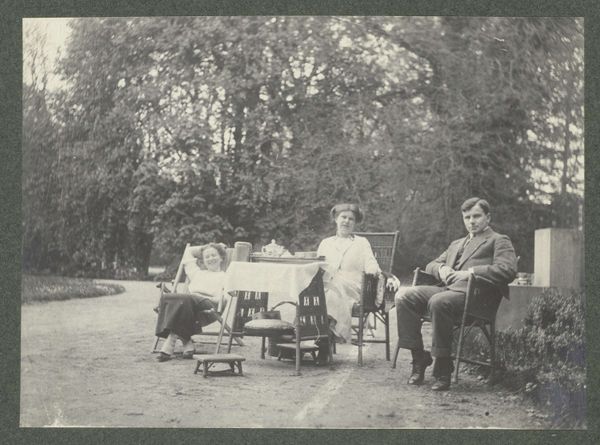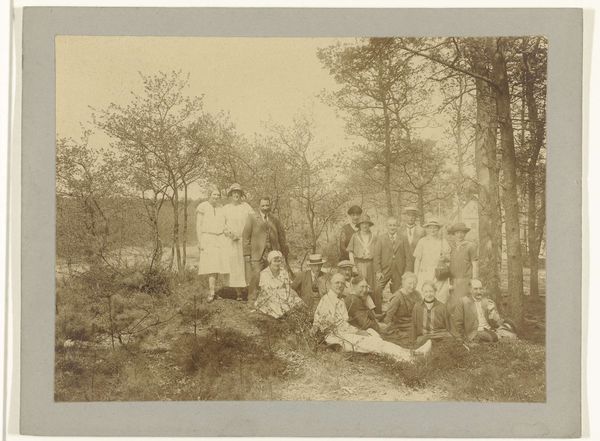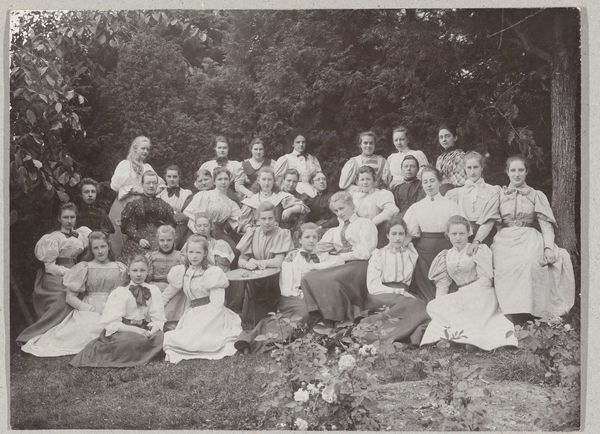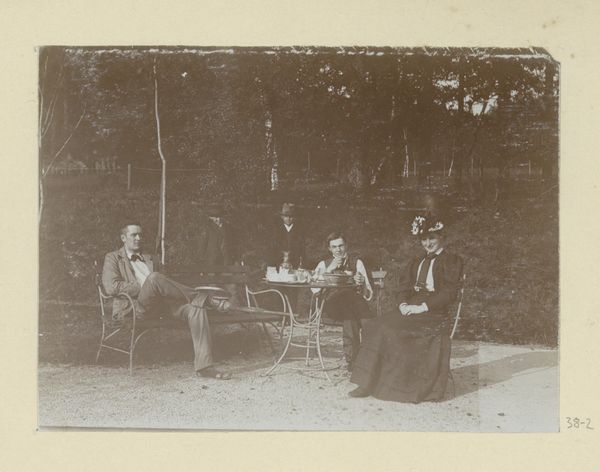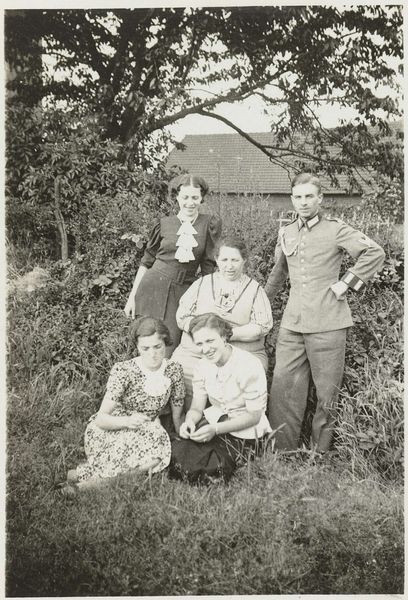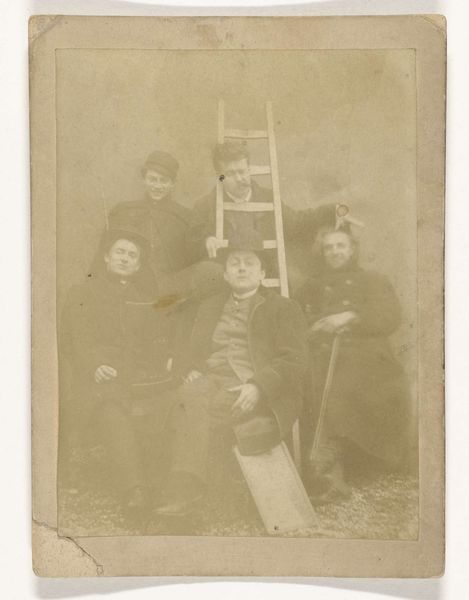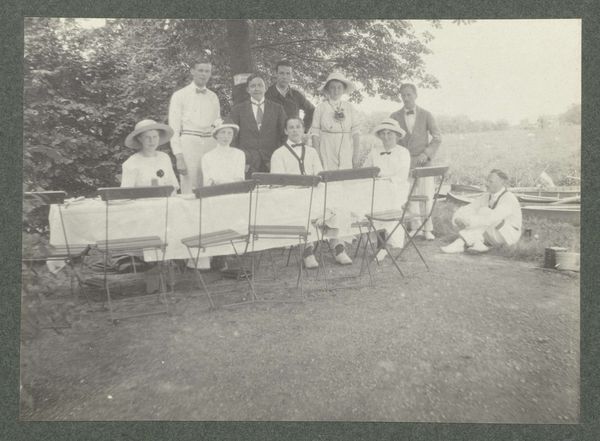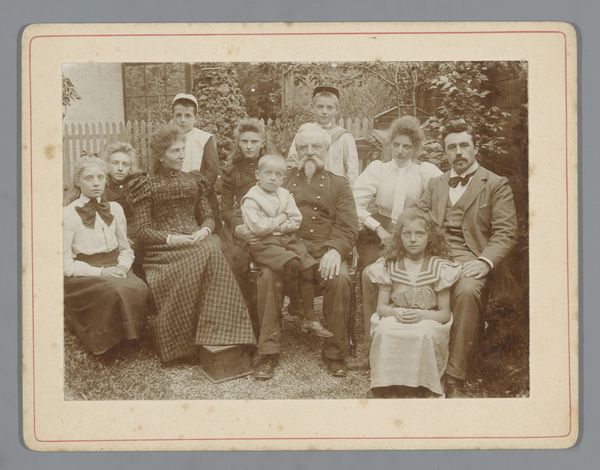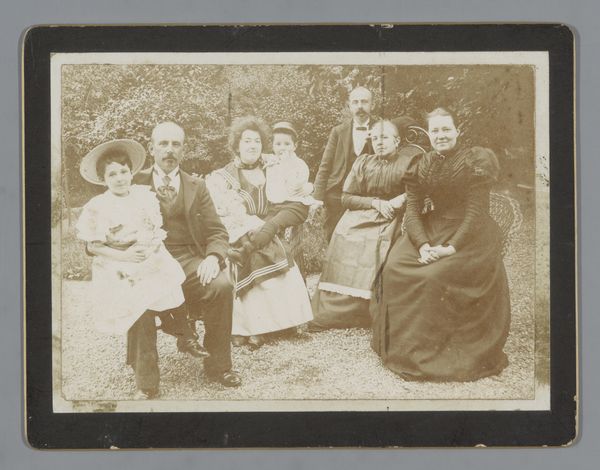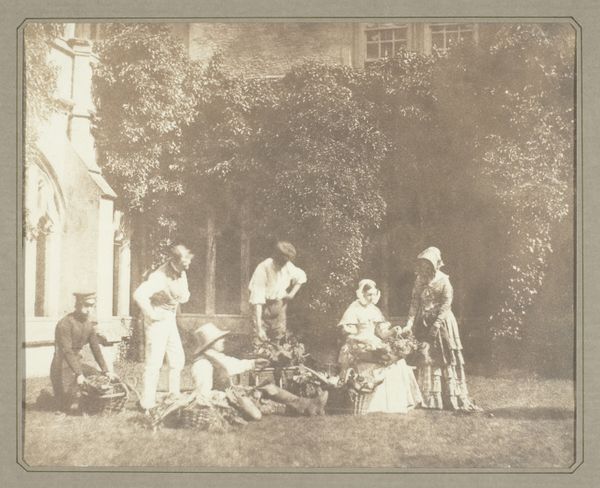
Dolph Kessler met vrienden op het gras voor een huis in Gainsborough c. 1903 - 1904
0:00
0:00
geldolphadriaankessler
Rijksmuseum
Dimensions: height 80 mm, width 110 mm, height 363 mm, width 268 mm
Copyright: Rijks Museum: Open Domain
Editor: This gelatin silver print, titled "Dolph Kessler met vrienden op het gras voor een huis in Gainsborough," was taken around 1903 or 1904. The image depicts five men casually posed on the lawn in front of a brick building. The light is diffused, creating a soft, nostalgic atmosphere. I'm struck by the evident class distinctions visible through their clothing; what layers can we unpack within that contrast? Curator: That's a very astute observation. Let's consider pictorialism, the photographic movement to which Kessler belonged. Pictorialism aimed to elevate photography to the level of fine art, often mimicking painting styles and subjects. Given its historical context – the rigid social structures of the early 20th century – what might be the radical potential in portraying figures with such casual intimacy and varying attire? Is this an intentional dismantling of those structures, or merely a romanticized, even blind, depiction of them? Editor: I see what you mean. So, the choice of composition – the casual posing and the focus on leisure – challenges the conventions of portraiture at the time, which tended to emphasize formality and status? Curator: Exactly. Now, consider the relationship between Kessler and his subjects, presumably friends. How does that relationship inform the photograph? Whose gaze is privileged here? How are we, as viewers, positioned within this intimate social circle? Further, we can question the accessibility of such leisurely poses themselves. Who has the privilege to relax and be photographed, and who does not? Editor: It's fascinating to think about how a seemingly simple photograph can reveal so much about social dynamics and artistic intentions. It encourages a critical re-evaluation, pushing beyond aesthetic appreciation. Curator: Indeed. By questioning representation and the power dynamics inherent in image-making, we engage more fully with not only the history of art but also the history of the human condition. Thank you.
Comments
No comments
Be the first to comment and join the conversation on the ultimate creative platform.
